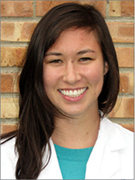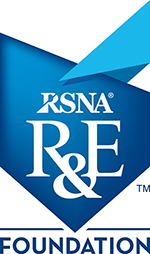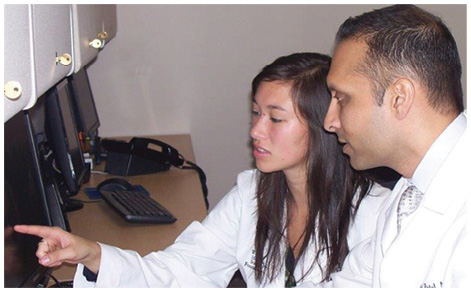Interventional Chest Port Insertions Less Expensive Than Surgery
A chest port can be inserted at significantly lower cost by radiologists in an interventional radiology suite vs. by surgeons in an operating room

 A chest port (CP) can be inserted at significantly lower cost, with no difference in complication or infection rates, if performed by radiologists in an interventional radiology (IR) suite rather than by surgeons in an operating room (OR), according to a new cost-analysis study conducted with the aid of a 2013 RSNA Research Medical Student Grant.
A chest port (CP) can be inserted at significantly lower cost, with no difference in complication or infection rates, if performed by radiologists in an interventional radiology (IR) suite rather than by surgeons in an operating room (OR), according to a new cost-analysis study conducted with the aid of a 2013 RSNA Research Medical Student Grant.
“With the healthcare system under increasing pressure to minimize cost of care while maintaining quality, examining how and where services are rendered will be increasingly important,” said Jennifer LaRoy, B.A., a medical student at the Medical College of Wisconsin in Milwaukee, who performed the two-pronged study, “Cost and Morbidity Analysis of Chest Port Insertion: Interventional Radiology vs. Surgical Implantation,” at her institution.
Before determining the cost-analysis part of the study, LaRoy sought to discern any difference in complication and infection rates associated with the placement of CPs, whether the procedure was done in an OR or the IR suite.
Researchers compared data from 478 charts from two cohorts (239 patients in each) who underwent isolated CP placements in the IR and OR. Approximately 50 data points were collected for patients including demographic information, indication and primary diagnosis for port placement, placement of catheterwtip immediately after procedure, and port-related complications/infections.
Thrombosis/tip occlusion was the most common complication experienced by patients in both cohorts. Operating-room patients had more cases of tip malposition and venous thrombosis than IR patients. Although 18 IR patients experienced infection compared with 13 of the OR patients, bivariate analysis determined no significant complication or infection rates between the cohorts.
“Because there wasn’t a factor for which we had to correct, we were able to just look at costs alone,” said Parag J. Patel, M.D., M.S., assistant professor of radiology and surgery at the Medical College of Wisconsin, who served as LaRoy’s scientific advisor for the study.
The study showed the overall cost to place the CP in an OR setting was 193 percent greater than when done in the IR suite. Room costs were higher in the OR for every component reviewed—variable labor, variable supply and fixed cost. Performing the procedure in the IR suite also saved significant time. The average room time was 36.9 minutes in the IR suite, compared to 69 minutes in an OR setting.
Researchers found the same pattern on the pharmacy side. The pharmacy cost was 201 percent greater for CPs placed in the OR versus the IR suite. As with room costs, each component of pharmacy cost was greater on the OR side.
"While more research is necessary, the study shows a possible area for cost-cutting as healthcare continues to evolve toward a value-based system and reimbursement undergoes a wide range of changes," said LaRoy, who presented her research at RSNA 2014.
“We can’t continue to afford our current spending on healthcare. When we get to a point where we need to make cuts, studies like ours will help us make data-driven informed decisions on how to more efficiently practice medicine,” Dr. Patel said.
Radiologists are urged to request such cost-effectiveness/comparative effectiveness data “to prevent further erosion of our services by assessing our performance as a field and working to improve the quality and value that we deliver,” LaRoy said.
RSNA Grant Nurtures Research Skills
LaRoy, a 2016 medical degree candidate who plans to pursue a career in academic radiology, sought out opportunities to perform mentor-guided research, which led to receiving the 2013 RSNA Research Medical Student Grant.
Under the supervision of Dr. Patel, LaRoy showed a propensity for research work. “She was diligent about this process, whether it was protocol planning, research planning, statistical analysis and critical analysis of data. She did a great job on each phase of this project,” Dr. Patel said.
Along with Dr. Patel, LaRoy credits Sarah B. White, M.D., M.S., for guiding her through the process. Dr. White, who received a 2013-2014 RSNA Research Seed Grant and a 2014-2016 Bracco Diagnostics RSNA Research Scholar Grant, assisted with oversight of the project, particularly data collection and analysis. “This grant gave me the opportunity to develop skills in research design, data collection, analysis, and interpretation and manuscript preparation,” LaRoy said.
“I now have two excellent mentors who have helped me to appreciate the value of continuing research throughout my career,” LaRoy continued. “I look forward to pursuing my career in academic radiology and continuing research.” LaRoy added she plans to expand on this project during her final years in medical school.
Paul LaTour is an RSNA News staff writer.
R&E Foundation Restructures Grant Study Section
At the RSNA Research & Education (R&E) Foundation, spring marks the beginning of grant season— a time of great potential for new innovations in radiologic research and education.
To keep pace with ever-increasing number of grant applications and to maintain the quality of the grant review process, the R&E Foundation Grant Program Committee has restructured the Radiology Research Study Section into two new smaller sections. These two new bodies—the Research Faculty Grant Study Section and the Research Trainee Grant Study Section—are charged with reviewing Scholar and Seed grant applications and Resident and Fellow grant applications respectively.
This new targeted review process allows for additional review time and enhanced discussions, thus meeting the challenges related to reviewing the large number of applications. R&E grant reviewers provide essential feedback to all applicants with the goal of improving their research approach and grant writing skills.
The Radiology Research Study Sections, the Education Study Section and the Radiation Oncology Study Section met in March to score grant applications. The Medical Student Grant Review Panel also completed its work. Final funding decisions will be made by the R&E Foundation Board of Trustees and grant recipients will be announced this summer.
“The RSNA Foundation strives to engage and encourage promising new scientists and educators in radiology and related sciences,” said Grant Program Committee Chair Kathryn A. Morton, M.D. “The receipt of an RSNA Research and Education Foundation grant is often the springboard from which a successful career in academic radiological science is launched. These high profile awards underscore the commitment of the RSNA R&E Foundation and its generous donors to education, research and development in radiological sciences and to the support of new individuals to carry forward these goals.”
For more information about the R&E Foundation grant process, go to RSNA.org/Foundation.
Grants in Action
Name:
Jennifer LaRoy, B.A.
Grant Received:
2013 RSNA Research Medical Student Grant
Study:
“Cost and Morbidity Analysis of Chest Port Insertions: Interventional Radiology vs. Surgical Implantation.”
Career Impact:
“This provided me with an opportunity to pursue my interests in radiology and work closely with physicians and gain a deeper appreciation for the research that is needed to allow for evidence-based practice to continue. I intend to expound on this project during my next few years in medical school and am very interested in pursuing a career in academic radiology.”
Clinical Implication:
“Our overall findings suggest that there is a similar complication rate, a similar rate of infection, and a significantly lower cost associated with chest port placement performed in the IR suite. In the current healthcare environment and with the initiation of the Affordable Care Act, quality of care is of the utmost importance. We hope by publishing our results, hospitals will understand not only the quality of services offered by vascular interventional radiology (VIR), but also the value of VIR services.
